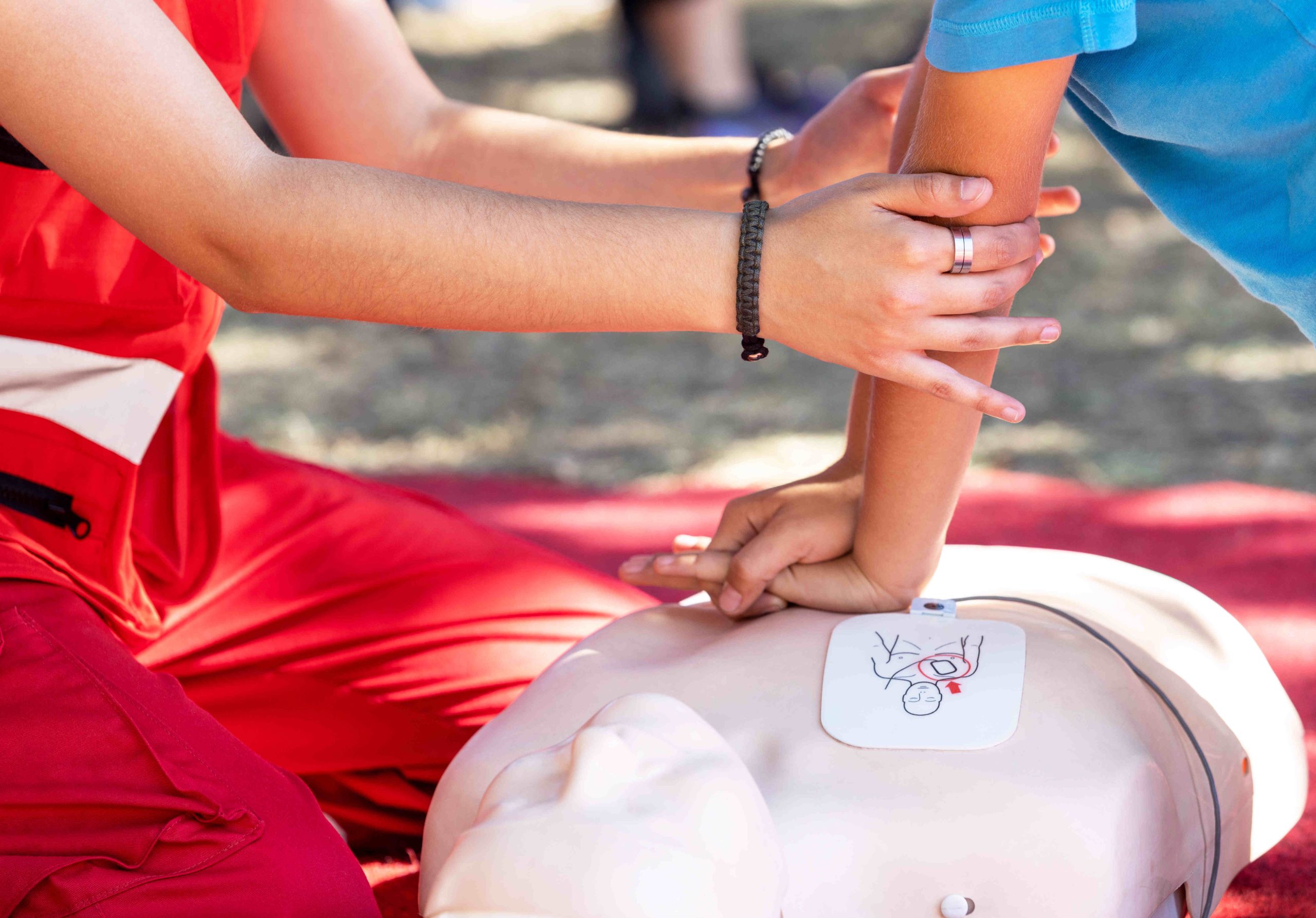The Medical Minute: Hamlin’s cardiac arrest highlights need for equipment, training

For minutes that seemed to drag on endlessly Monday evening, tens of thousands of NFL fans at Paycor Stadium in Cincinnati and millions more watching on television around the globe held their collective breath. After falling to the ground in what looked like a routine collision on the field, 24-year-old Buffalo Bills safety Damar Hamlin stood and then collapsed a moment later.
Medical staff administered cardiopulmonary resuscitation (CPR) and used a defibrillator. Players, coaches and trainers looked on, dazed, as an ambulance whisked Hamlin away to a nearby hospital.
Watching from his couch at home, Dr. Matthew Silvis, a sports medicine physician in the Department of Family and Community Medicine at Penn State Health Medical Group – Palmyra, thought the unfolding catastrophe looked like a freak accident with which he’d seen other young athletes and parents grappling. While no cause has yet been released for Hamlin’s cardiac arrest, it bore some of the hallmarks of a rare condition called commotio cordis.
Rare is an understatement. For commotio cordis to stop someone’s heart, the blow to the chest must come at a very specific speed, and the impact has to occur with outlandishly bad timing.
“We train for that scenario,” Silvis said.
Regardless of the cause of Hamlin’s emergency, it highlights how the right training and equipment can mean the difference between crisis and tragedy. Whether cardiac arrest is caused by a preexisting condition or a freak occurrence, seconds always count. The fact that someone nearby knew CPR and was equipped with an automated external defibrillator (AED) gave Hamlin the fighting chance he’s still counting on. And the arrival of an ambulance illustrated the third part of the equation for saving the life of someone whose heart has stopped: calling 911.
Silvis and Dr. Soraya Samii, a cardiologist at Penn State Heart and Vascular Institute, offer their perspectives on what kinds of heart emergencies athletes can face and how you can help to make a difference for someone like Hamlin.
What can you do?
Regardless of the cause, cardiac arrest in athletes is exceedingly rare, occurring only about 100 to 150 times a year, Samii said. And prevention is practically impossible.
“Think about all the football games you’ve seen and this has never happened,” Samii said. “So, I don’t know that things need to change. What should be emphasized is having the skills to respond.”
Among the few occurrences, cardiac arrest usually happens in someone older with a preexisting condition, such as high blood pressure. Modern medicine has long advocated for the benefits of cardiovascular exercise, with doctors recommending at least 25 minutes, five days a week. But if you take on any new sport, you should consult with your doctor to make sure you’re healthy enough, Samii said.
But what happened to Hamlin, an athlete seemingly in peak physical condition, is rarer still. Sometimes, even athletes have unknown or undetected heart conditions. Hypertrophic cardiomyopathy, for example, is a thickening of the heart that might go undetected until physical exertion suddenly causes an arrest.
But whatever the reason, you take the same steps in an emergency:
- Have someone call 911.
- Find a defibrillator. Luckily, that seems to get easier all the time. Airports, schools and other public buildings are installing them. Police officers keep them in their cars. They are also showing up in some dugouts where children play baseball, Silvis said. Anyone can use an AED, but for more on how to receive training, visit org.
- Perform CPR with chest compressions until help arrives. For this, a professional certification isn’t necessary, but training is. Silvis suggested classes offered by the American Red Cross. Some Penn State Health nurses teach CPR at The Peyton Walker Foundation. “If you did your training 15 years ago, they do it differently now,” Silvis said. It’s important to keep up-to-date, he said.
What is commotio cordis?
Sometimes it happens at ― of all places ― children’s baseball games. A child is hit in the chest by a pitch. Sometimes the player collapses immediately. In other occurrences, the child starts toward first base and collapses on the way.
What’s happened is an electrical disruption, Silvis said, and it’s caused by a coincidence of startling accuracy. First, a blow to the chest cavity must carry enough force to create the trauma, but not enough to break the ribcage, so the force dissipates through the bones. Thirty to 50 miles per hour is about right, Silvis said, roughly the speed at which a Little League pitcher throws.
Next the timing must be pinpoint. The blow must occur within a .2 millisecond window during the cycle that pumps the heart. It’s the moment when the heart is repolarizing itself – getting ready for the electrical charge that causes its next beat.
“It’s not a preventable event,” Silvis said.
It’s also one of several not-very-likely scenarios that could cause cardiac arrest in an athlete. And again, the prescription is the same. Follow the 911+CPR+AED formula.
Related content:
- The Medical Minute: How to ‘Stop the Bleed’ and save a life
- The Medical Minute: The ABCs of handling emergency situations
The Medical Minute is a weekly health news feature produced by Penn State Health. Articles feature the expertise of faculty, physicians and staff, and are designed to offer timely, relevant health information of interest to a broad audience.
If you're having trouble accessing this content, or would like it in another format, please email Penn State Health Marketing & Communications.
